Abstract
1. Cells of Nitrosomonas europaea produced N2O during the oxidation of ammonia and hydroxylamine. 2. The end-product of ammonia oxidation, nitrite, was the predominant source of N2O in cells. 3. Cells also produced N2O, but not N2 gas, by the reduction of nitrite under anaerobic conditions. 4. Hydroxylamine was oxidized by cell-free extracts to yield nitrite and N2O aerobically, but to yield N2O and NO anaerobically. 5. Cell extracts reduced nitrite both aerobically and anaerobically to NO and N2O with hydroxylamine as an electron donor. 6. The relative amounts of NO and N2O produced during hydroxylamine oxidation and/or nitrite reduction are dependent on the type of artificial electron acceptor utilized. 7. Partially purified hydroxylamine oxidase retained nitrite reductase activity but cytochrome oxidase was absent. 8. There is a close association of hydroxylamine oxidase and nitrite reductase activities in purified preparations.
Full text
PDF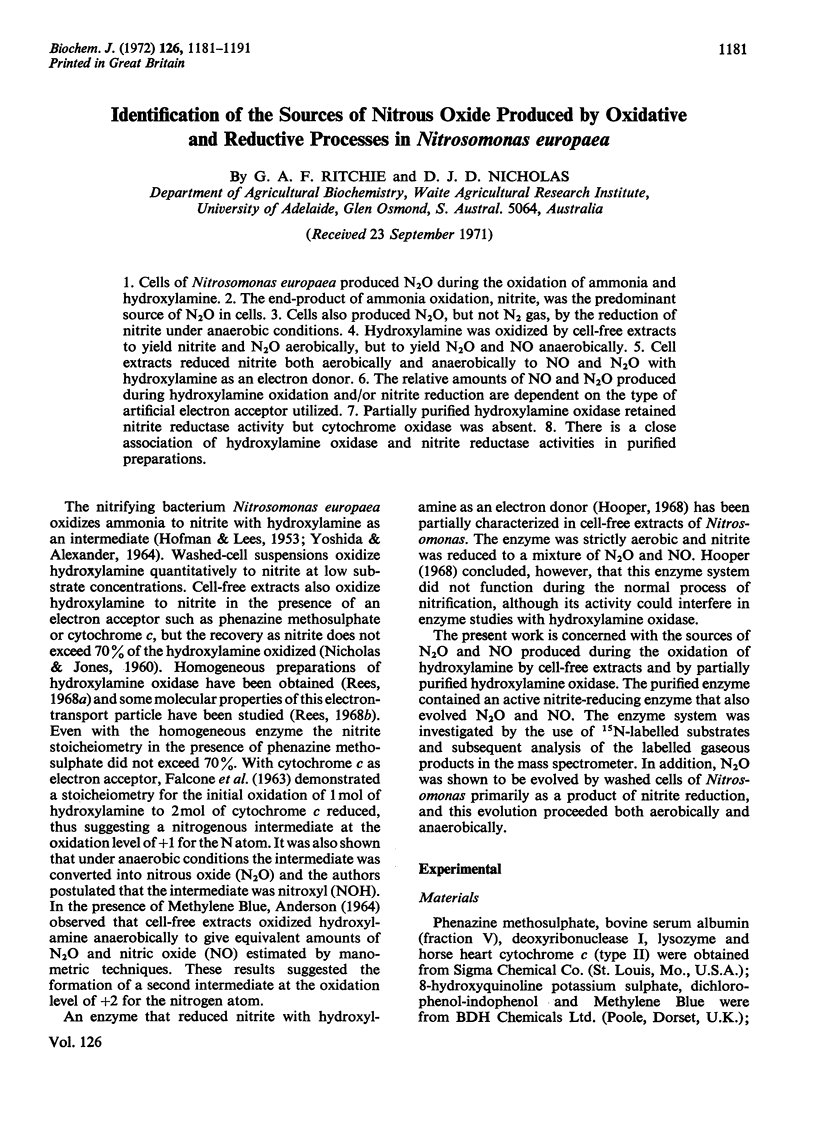
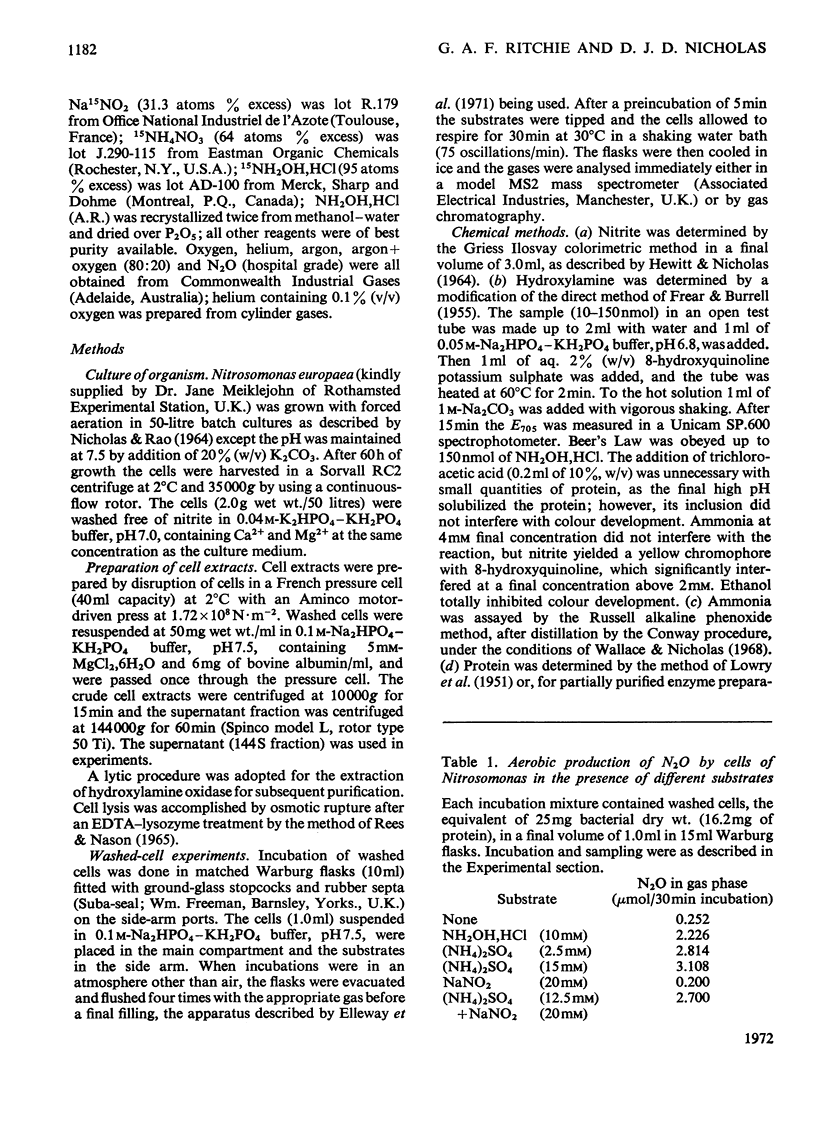
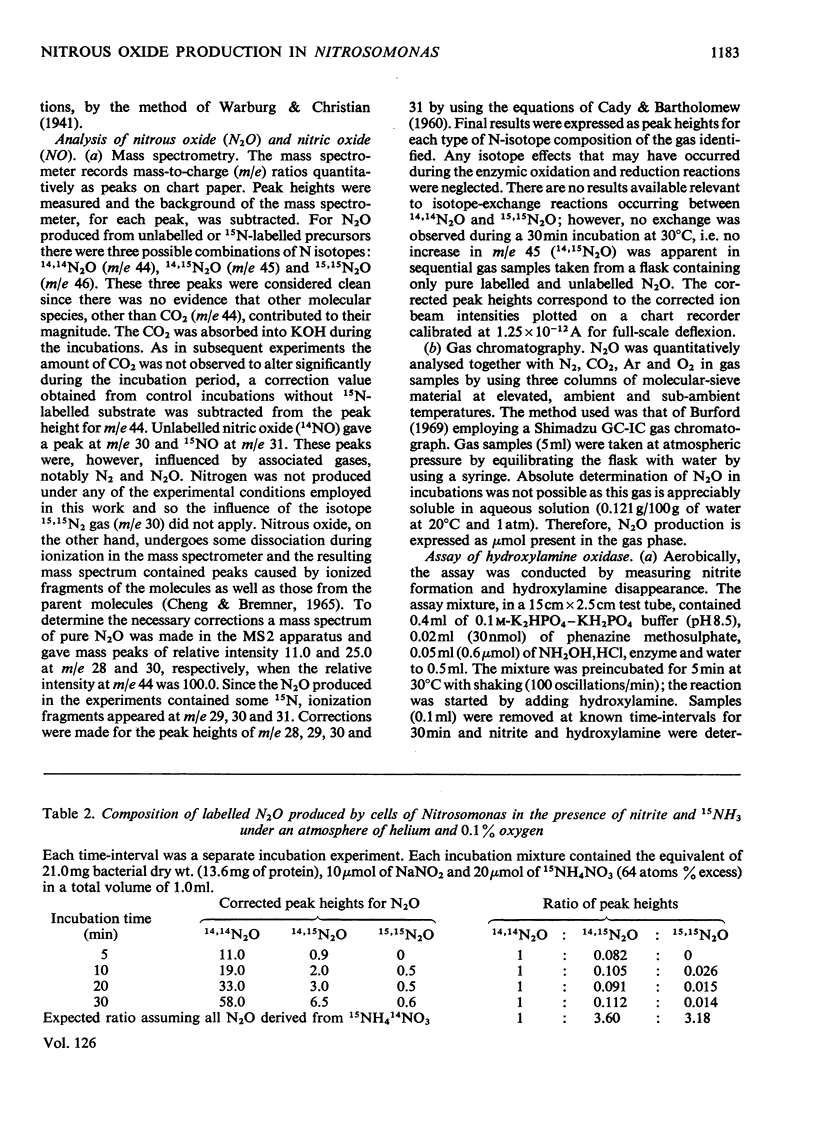
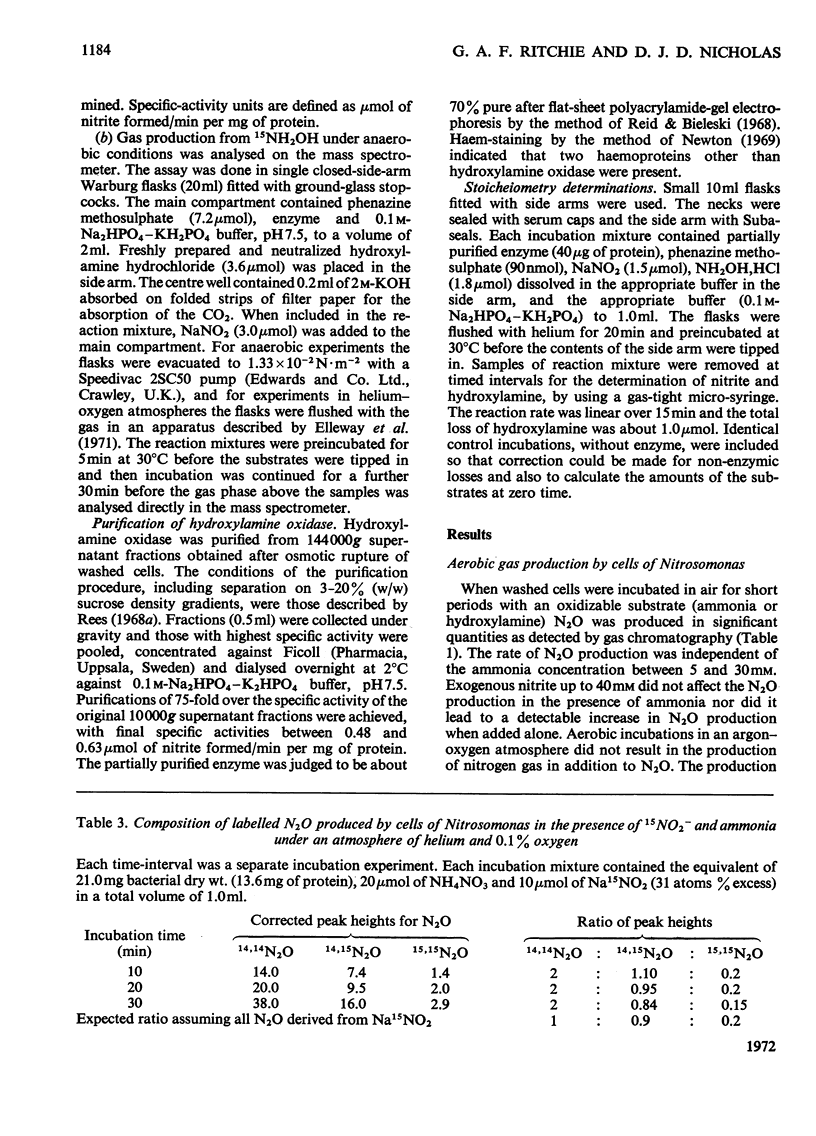
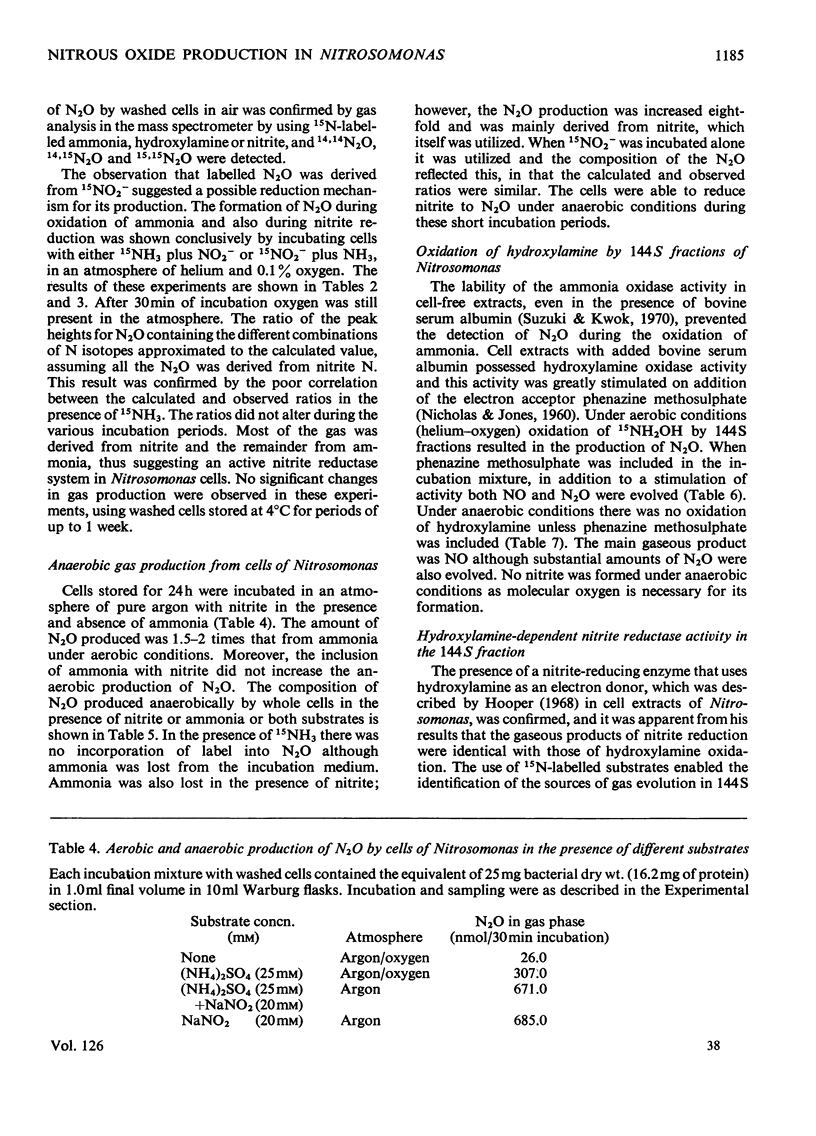
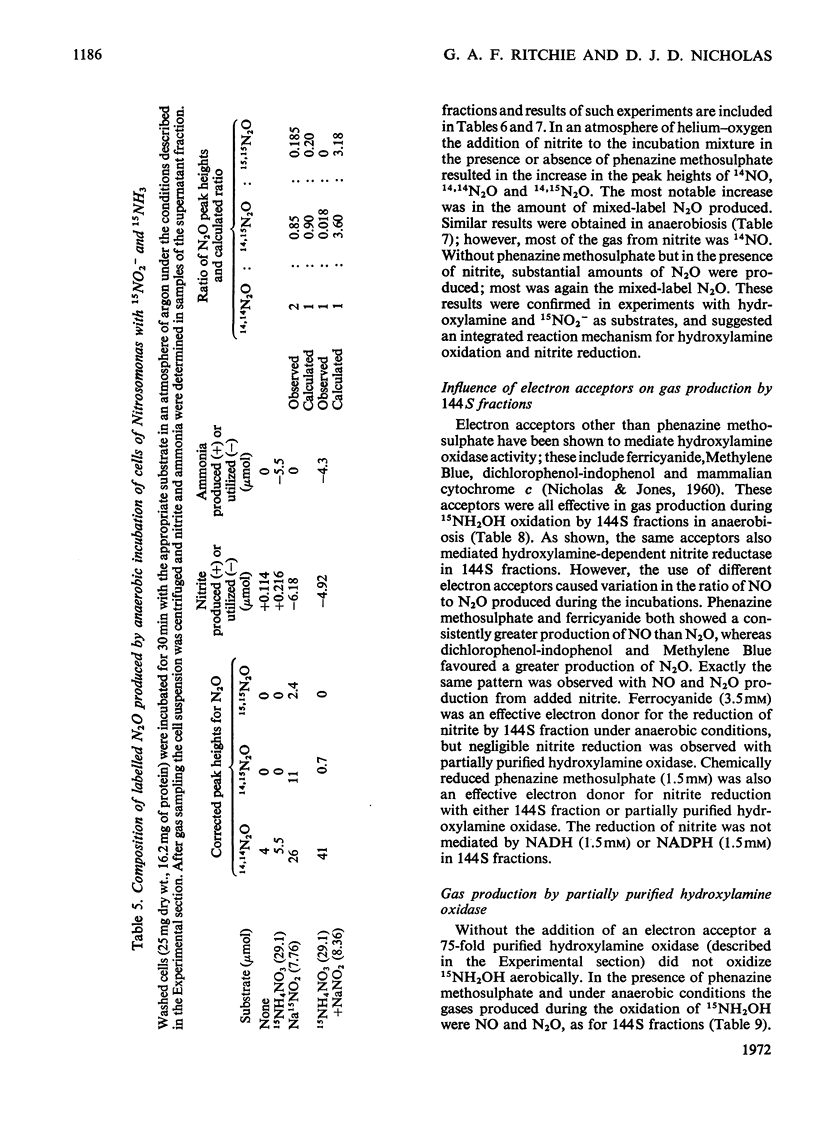
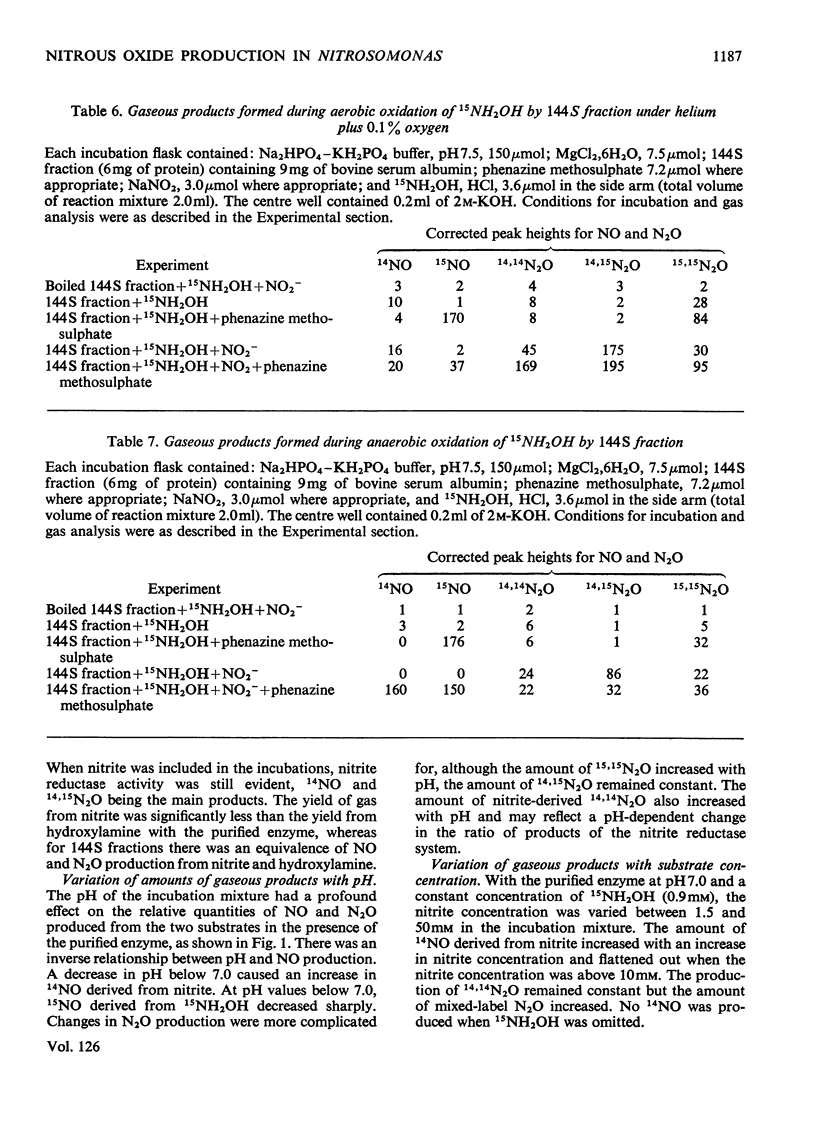

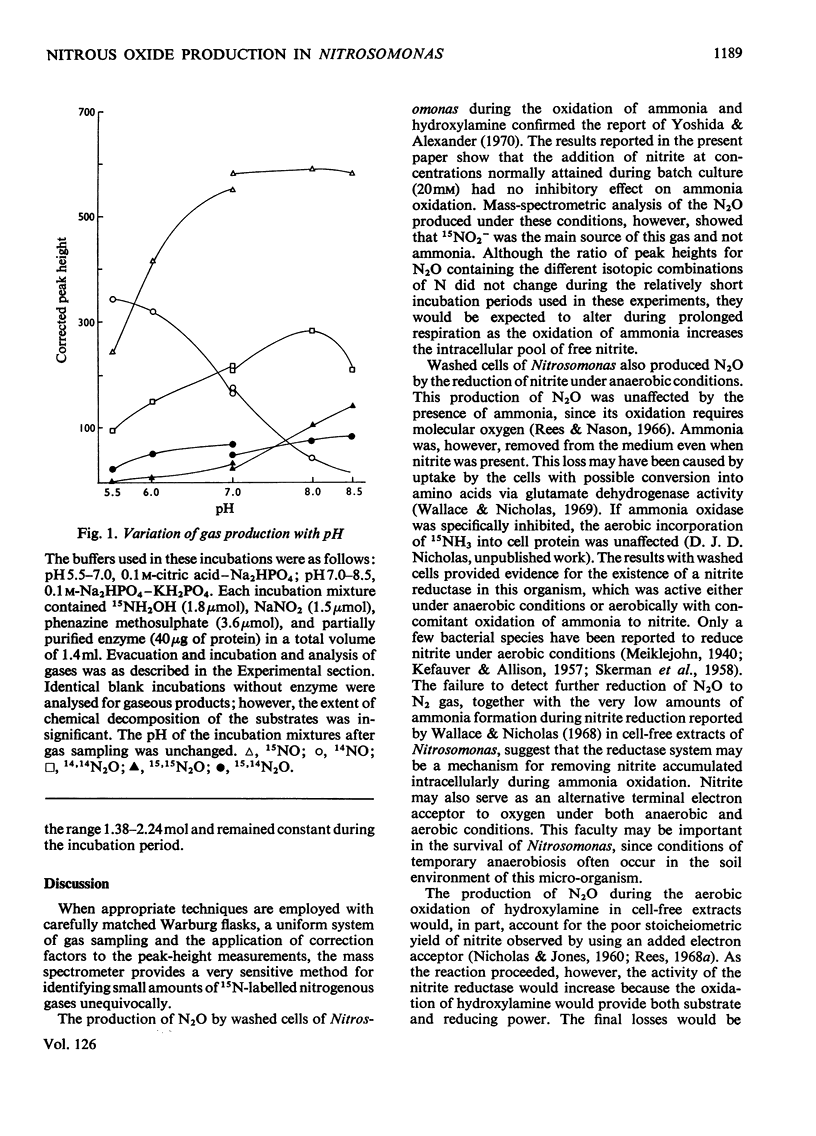
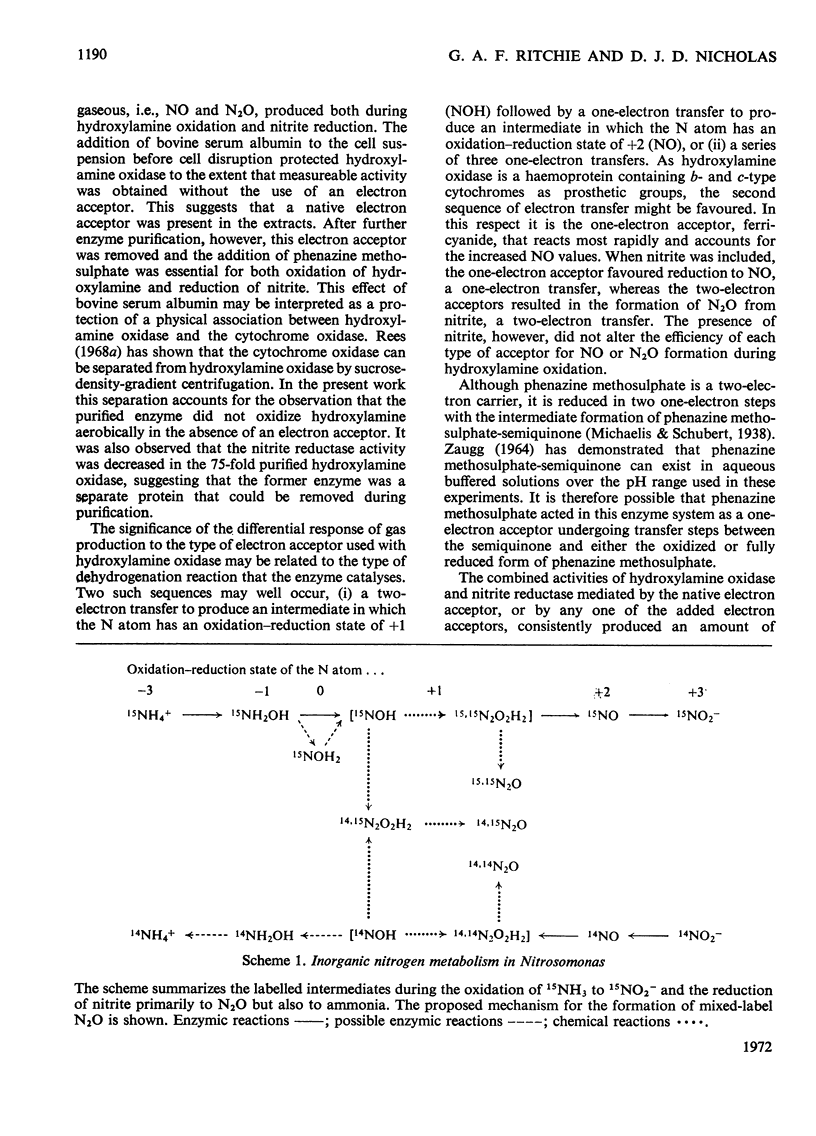
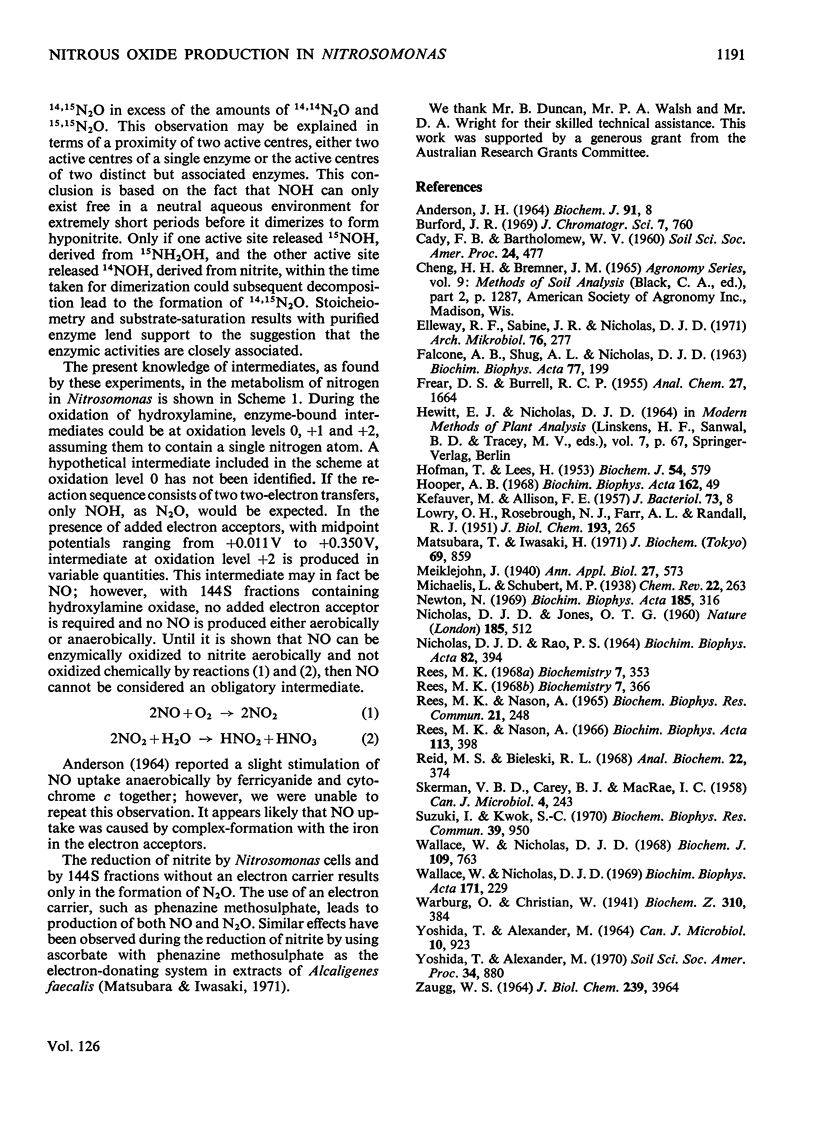
Selected References
These references are in PubMed. This may not be the complete list of references from this article.
- Anderson J. H. The metabolism of hydroxylamine to nitrite by Nitrosomonas. Biochem J. 1964 Apr;91(1):8–17. doi: 10.1042/bj0910008. [DOI] [PMC free article] [PubMed] [Google Scholar]
- Elleway R. F., Sabine J. R., Nicholas D. J. Acetylene reduction by rumen microflora. Arch Mikrobiol. 1971;76(4):277–291. doi: 10.1007/BF00408525. [DOI] [PubMed] [Google Scholar]
- FALCONE A. B., SHUG A. L., NICHOLAS D. J. SOME PROPERTIES OF A HYDROXYLAMINE OXIDASE FROM NITROSOMONAS EUROPAEA. Biochim Biophys Acta. 1963 Oct 1;77:199–208. doi: 10.1016/0006-3002(63)90493-1. [DOI] [PubMed] [Google Scholar]
- HOFMAN T., LEES H. The biochemistry of the nitrifying organisms. IV. The respiration and intermediary metabolism of Nitrosomonas. Biochem J. 1953 Jul;54(4):579–583. doi: 10.1042/bj0540579. [DOI] [PMC free article] [PubMed] [Google Scholar]
- Hooper A. B. A nitrite-reducing enzyme from Nitrosomonas europaea. Preliminary characterization with hydroxylamine ad electron donor. Biochim Biophys Acta. 1968 Jul 16;162(1):49–65. doi: 10.1016/0005-2728(68)90213-2. [DOI] [PubMed] [Google Scholar]
- KEFAUVER M., ALLISON R. E. Nitrite reduction by Bacterium denitrificans in relation to oxidation-reduction potential and oxygen tension. J Bacteriol. 1957 Jan;73(1):8–14. doi: 10.1128/jb.73.1.8-14.1957. [DOI] [PMC free article] [PubMed] [Google Scholar]
- LOWRY O. H., ROSEBROUGH N. J., FARR A. L., RANDALL R. J. Protein measurement with the Folin phenol reagent. J Biol Chem. 1951 Nov;193(1):265–275. [PubMed] [Google Scholar]
- Matsubara T., Iwasaki H. Enzymatic steps of dissimilatory nitrite reduction in Alcaligenes faecalis. J Biochem. 1971 May;69(5):859–868. doi: 10.1093/oxfordjournals.jbchem.a129537. [DOI] [PubMed] [Google Scholar]
- NICHOLAS D. J., RAO P. S. THE INCORPORATION OF LABELLED CO2 INTO CELLS AND EXTRACTS OF NITROSOMONAS EUROPAEA. Biochim Biophys Acta. 1964 Feb 10;82:394–397. doi: 10.1016/0304-4165(64)90311-3. [DOI] [PubMed] [Google Scholar]
- Newton N. The two-haem nitrite reductase of Micrococcus denitrificans. Biochim Biophys Acta. 1969;185(2):316–331. doi: 10.1016/0005-2744(69)90425-2. [DOI] [PubMed] [Google Scholar]
- Rees M. K. Studies of the hydroxylamine metabolism of Nitrosomonas europaea. I. Purification of hydroxylamine oxidase. Biochemistry. 1968 Jan;7(1):353–366. doi: 10.1021/bi00841a045. [DOI] [PubMed] [Google Scholar]
- Rees M., Nason A. A P-450-like cytochrome and a soluble terminal oxidase identified as cytochrome o from Nitrosomonas europaea. Biochem Biophys Res Commun. 1965 Nov 8;21(3):248–256. doi: 10.1016/0006-291x(65)90279-2. [DOI] [PubMed] [Google Scholar]
- Rees M., Nason A. Incorporation of atmospheric oxygen in nitriteformed during ammonia oxidation by Nitrosomonas europaea. Biochim Biophys Acta. 1966 Feb 14;113(2):398–401. [PubMed] [Google Scholar]
- Reid M. S., Bieleski R. L. A simple apparatus for vertical flat-sheet polyacrylamide gel electrophoresis. Anal Biochem. 1968 Mar;22(3):374–381. doi: 10.1016/0003-2697(68)90278-9. [DOI] [PubMed] [Google Scholar]
- SKERMAN V. B., CAREY B. J., MACRAE I. C. The influence of oxygen on the reduction of nitrite by washed suspensions of adapted cells of Achromobacter liquefaciens. Can J Microbiol. 1958 Jun;4(3):243–256. doi: 10.1139/m58-026. [DOI] [PubMed] [Google Scholar]
- Suzuki I., Kwok S. C. Cell-free ammonia oxidation by Nitrosomonas europaea extracts: effects of polyamines, Mg2+ and albumin. Biochem Biophys Res Commun. 1970 Jun 5;39(5):950–955. doi: 10.1016/0006-291x(70)90416-x. [DOI] [PubMed] [Google Scholar]
- Wallace W., Nicholas D. J. Glutamate dehydrogenase in Nitrosomon as europaea and the effect of hydroxylamine, oximes and related compounds on its activity. Biochim Biophys Acta. 1969 Feb 11;171(2):229–237. doi: 10.1016/0005-2744(69)90156-9. [DOI] [PubMed] [Google Scholar]
- Wallace W., Nicholas D. J. Properties of some reductase enzymes in the nitrifying bacteria and their relationship to the oxidase systems. Biochem J. 1968 Oct;109(5):763–773. doi: 10.1042/bj1090763. [DOI] [PMC free article] [PubMed] [Google Scholar]
- YOSHIDA T., ALEXANDER M. HYDROXYLAMINE FORMATION BY NITROSOMONAS EUROPAEA. Can J Microbiol. 1964 Dec;10:923–926. doi: 10.1139/m64-121. [DOI] [PubMed] [Google Scholar]
- ZAUGG W. S. SPECTROSCOPIC CHARACTERISTICS AND SOME CHEMICAL PROPERTIES OF N-METHYLPHENAZINIUM METHYL SULFATE (PHENAZINE METHOSULFATE) AND PYOCYANINE AT THE SEMIQUIDNOID OXIDATION LEVEL. J Biol Chem. 1964 Nov;239:3964–3970. [PubMed] [Google Scholar]


